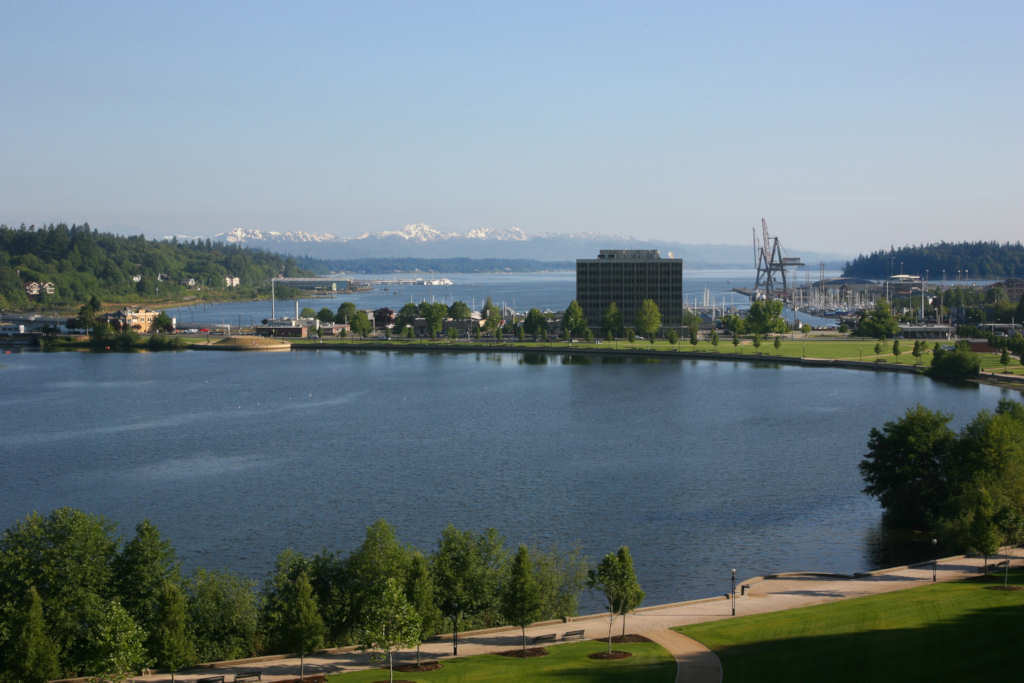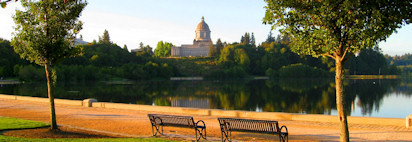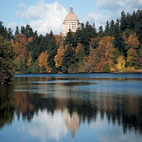Review of the "Capitol Lake Alternatives Analysis- Final Report"
Wayne Daley CFS, Fisheries Biologist/Bioengineer - November 2012
I have been asked to review and provide my professional assessment of the impact on the water quality of and fisheries of Capitol Lake and Budd Inlet with the removal of the Capitol Lake Dam and the subsequent change to a mud flat/estuary environment. The alternative is to retain the dam and develop a managed lake for the benefit of the environment and community use objectives.
I have reviewed the documentation that has been prepared by the State of Washington and many local interest groups. This review is limited to the impacts to the fishery and water quality that would result from the alternatives that are documented in the Capitol Lake Alternatives Analysis.
In addition there are issues and oversights observed in the reference material addressed in those reports. Most importantly are the findings of the Department of Ecology report on Water Quality for the Deschutes River, Capitol Lake and Budd Inlet.
WATER QUALITY
The draft document from Washington Department of Ecology is a good document that clearly identifies the existing conditions for water quality in the Deschutes River, Capitol Lake and Budd Inlet. Most importantly it identifies the major source of pollutants to the entire watershed is the Deschutes River. The following statement is taken from the water quality section of the Capitol Lake Alternatives Analysis:
However, because the management alternatives for the Capitol Lake Basin are not expected to significantly improve temperature, pH and fine sediment issues in the Deschutes River. Water quality in the Deschutes River impacts the quality of the lake, which in turn impacts the Inlet.
One of the major oversights of the alternatives analysis is the total lack of consideration for the impacts of saltwater aquatic vegetation on the shoreline of the lake if the dam is removed. In the past 15 years there has been a significant shift in the level of aquatic plants in the nearshore habitat of Puget Sound from eelgrass to sea lettuces namely Ulva spp.
The estuaries and confined inlets of Central and South Puget Sound are experiencing strong odors that are often blamed on sewer and septic systems. The odors are particularly noticeable in the summer months and occur at low tides on very warm days as the Ulva on the beaches smother other plants and animals and the dead material begins a process of decomposition that has a strong sewer smell.
If the dam is removed the outlet will be restricted by the narrow area that the dam covers and there will be an ideal condition for the above situation to become established on the shoreline area upstream of the 5th Avenue Bridge. I was involved in the design and construction of the Schel Chelb estuary on Bainbridge Island in 1996. The outlet of this small estuary is restricted by a concrete bridge.
The size of the Schel Chelb project is a scaled model of what would result from the removal of the dam on Capitol Lake. In the last 10 years, as the Schel Chelb estuary has become stabilized as a saltwater environment, summer odors have become very prevalent and residents in the area are commenting and complaining. I have observed the same odor issue around Central and South Puget Sound where the beaches are very gradual slopes exposing broad areas of beach at low tides in the spring and summer months.
FISHERIES ENHANCEMENT
As identified in the Alternatives Analysis, fisheries issues are a concern and need to be addressed. The Washington Department of Fisheries has managed an enhancement program in Capitol Lake for years and has used the fish passage facility on Tumwater Falls as a point to capture returning adult Chinook for a Chinook enhancement program. This effort for Chinook enhancement within Capitol Lake for the Deschutes River was discontinued in 2007 along with the net pen program in Capitol Lake.
By using the lake as a protected area for extended rearing of juvenile Chinook a significant increase in the population was realized with the program that was discontinued. Under the Managed Lake Alternative there will be a continued positive benefit and enhancement of the Chinook population of the Deschutes Watershed.
The concept of using an extended freshwater rearing facility, which the Lake would be, are effective as clearly demonstrated by a recent publication of the results of a study by the Nez Perce Tribe in the Umatilla River Watershed. In the October 6th 2012 publication of the Columbia Basin Bulletin, a summary of the study was published. The Conclusion of the study indicates a definite increase in the abundance and productivity of Chinook salmon without impacting wild fish.
"We conclude that fish chosen for hatchery rearing did not have a detectable negative impact on the fitness of wild fish by mating with them for a single generation. Results suggest that supplementation following similar management practices (e.g. 100 percent local, wild-origin brood stock) can successfully boost population sized with minimal impacts on the fitness of salmon the wild."
The hatchery rearing is equivalent to the extended freshwater rearing of juvenile fish in Capitol Lake before the fish move into Budd Inlet. The fish have an opportunity to utilize the natural freshwater aquatic insects and the protection from saltwater predators. If the dam is removed there will no longer be a significant freshwater rearing area, deep pool habitat, which is lacking in much of the Deschutes River lower reaches.
The Nez Perce study showed a clear boost to the number of adult salmon returning to the population from the supplementation (extended freshwater rearing);
"Where fish taken in to the hatchery produced an average of nearly 5 times the number of returning adults compared to the fish that were left in the wild to spawn. A key finding of the JCAPE study was that hatchery-origin fish that spawned naturally with a wild fish had equivalent reproductive success as two wild fish, suggesting that Chinook salmon reared for a single generation in the supplementation hatchery did not reduce the fitness of wild fish."
MANAGED LAKE ALTERNATIVE
Fisheries benefit:
The Nez Perce study was a process very similar to the program that was being used by WDFW on Capitol Lake where fry were reared in net pens in the lake prior to release to the saltwater environment. Under the managed lake alternative Capitol Lake will be dredged and the shoreline cleaned up and planted with native vegetation. The salmonids coming downstream will have an opportunity to grow to a more competitive size prior to swimming to the saltwater environment of Budd Inlet. Survival will be significantly higher for these fish over what would be experienced if fish entered saltwater at the upper end of the bay if the dam was removed.
Water quality benefit:
Water quality will be improved with a managed shoreline of native vegetation, deep water for improved dissolved oxygen levels, lower water temperatures at depth in the summer months and the enhancement of juvenile salmonid shoreline habitat. Shaded shorelines on the south banks will improve summer water temperature issues in the shallow habitat close to the shoreline. In addition the removal of non-native aquatic vegetation will reduce the amount of phosphorus that is captured by the plants and retained in the lake as the nutrients reach the lake from the river. The flow of water through the lake will be improved with a dredged lake as a well defined channel will be established.
SUMMARY OF THE MOST BENEFICAL NEXT STEPS
The most important effort that the State and Thurston County need to address is what is happening in the Deschutes River watershed that results from silt and sediment along with toxic chemicals from storm water run off. If the proper steps are taken to control storm water runoff, the managed lake alternative will result in less sediment reaching the marinas and Budd Inlet.
The design of the outlet of the Deschutes River into Capitol Lake could be one alternative for sediment traps to minimize the need for continued dredging of the entire lake and the marinas in Budd Inlet.
If the dam is removed there will be a continual need to deal with the sediment that will build up at the head of the Bay. At low tides during storm flows large deltas will form. The restricted outlet at the 5th Ave. Bridge will also alter a natural flow that an estuary would experience where a continually expanding shoreline is the controlling environment for discharge of the river flows.
The alternative of the managed lake system will provide the biggest benefit to the environmental resources as well as the best economic return.
This economic return includes a significant increase in the number of salmon that can be harvested by the commercial and sport fisheries. It is important to recognize that the sport fishery in the State of Washington is over a one billion dollar industry. In addition there will be significant benefit to the Port and the working waterfront economically and operationally with a reduction in the level of dredging that would be required compared to the dam removal option.
References
CAPITOL LAKE ALTERNATIVES ANALYSIS- FINAL REPORT. 2009. Herrera Environmental Consultants for Washington Department of General Administration & Capitol Lake Adaptive Management Plan Steering Committee. (Wa State Dept of Enterprise Services PDF Report 101 pages)
Columbia Basin Bulletin Volume No. 10052012. August 6 2012.
Deschutes River, Capitol Lake, and Budd Inlet Temperature, Fecal Coliform Bacteria, Dissolved Oxygen, pH and Fine Sediment Total Maximum Daily Load. Water Quality Study Findings. Draft- October 2008. Publication No. 09-0300xx. (Wa State Dept of Enterprise Services Web Page for this report)
Lamb A. B. Hanby. 2005. Marine Life of the Pacific Northwest. Harbour Publishing, Maderia Park, British Columbia.
Review of the "Capitol Lake Alternatives Analysis Final Report"
by: Wayne Daley CFS, Fisheries Biologist/BioengineerProfessional assessment of the impact on the water quality of and fisheries of Capitol Lake and Budd Inlet with the removal of the Capitol Lake Dam and the subsequent change to a mud flat/estuary environment.


